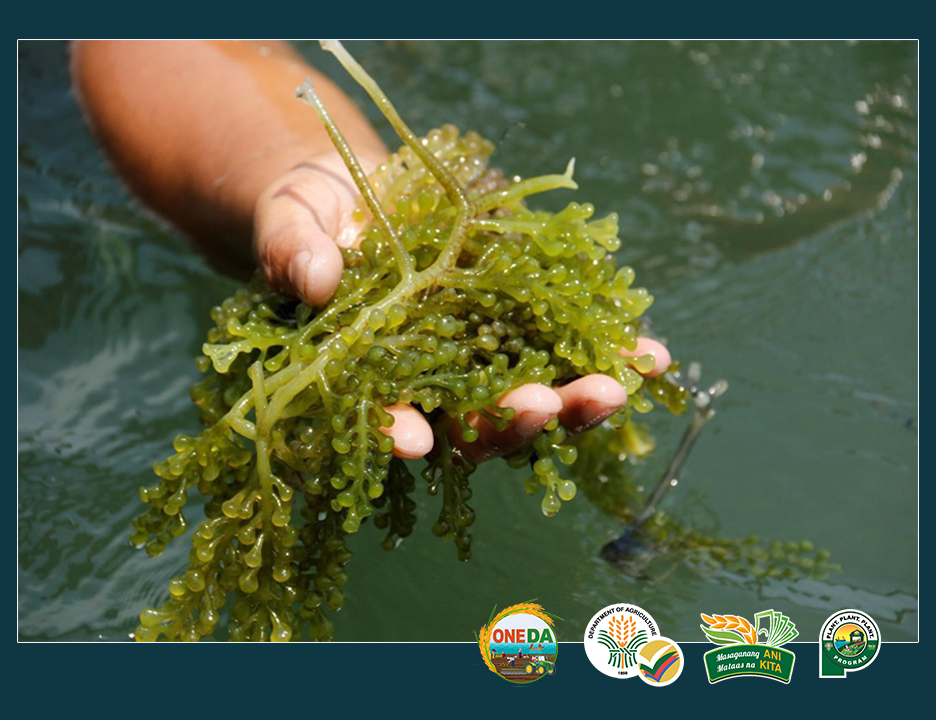
June 7, 2021. The Philippines is the world’s third largest producer of seaweed, following China and Indonesia (FAO, 2018). Seaweed is the top commodity produced by the aquaculture fisheries sub-sector with a total production of 1.49 million metric tons (64 (Philippine Fisheries Profile, 2019). Among the major seaweed-producing regions are Autonomous Region in Muslim Mindanao (ARMM), MiMaRoPa, and Zamboanga Peninsula (Philippine Fisheries Profile, 2019).
Seaweeds have 893 identified species and are marketed in raw (fresh or dried seaweeds) and processed forms (carrageenan). USA, China, Spain, Russia, and Belgium are the top importing countries of seaweed from the Philippines (Pedrosa, 2017).
In 2018, the Department of Agriculture-Bureau of Agriculture and Fisheries Standards (DA-BAFS) started working on the amendment of two Philippine National Standards (PNS) related to seaweed to update the practices based on the current regulatory and market requirements and further address the quality and food safety issues confronting the industry. These are PNS/BAFPS 85:2012 or the PNS for Dried Raw Seaweed and PNS/BAFPS 208:2017 or the Code of Good Aquaculture Practices (GAqP) for Seaweeds.
Related to this endeavor, another field data gathering was conducted in Calatagan, Batangas from May 31 to June 2, 2021 to obtain technical and commercial information that will support the provisions of the amended standards. The activity was participated by the BAFS managers along with the Technical Working Group (TWG) members from DA- Bureau of Fisheries and Aquatic Resources (BFAR) and University of the Philippines Marine Science Institute (UP-MSI). The group visited two (2) seaweed farms with the assistance of DA-BFAR Calabarzon and the Local Government Unit (LGU) of Calatagan.
The major commercial seaweeds cultured in Calatagan, Batangas are Kappaphycus striatus and Caulerpa racemosa, locally known as ‘sakol’ and ‘lato’, respectively. Batangas Seaweed Farmers Association (BASEFA) in Brgy. Dos, Calatagan, Batangas, usually cultures Kappahyscus species through raft and fixed bottom method and harvest within 45-60 days culture period. Harvested seaweed is dried for two (2) days through solar, floating and hanging methods until it reaches a moisture content of 36-38%.
In Sitio Burot, one of the seaweed farmers, Mr. Edgar Gubalani, provided information on farming of Caulerpa racemosa. According to him, C. racemosa is planted by burying a handful of cuttings into the mud, with planted spots marked by pieces of bamboo sticks. The seaweed may be partially harvested after two months (60 days), leaving a sizable amount of 20–25% of the crop to serve as seed stock for the next cropping.
Following the data gathering, a final stakeholder consultation will be conducted to validate the technical and commercial information from the data gathered and finalize the amendment of the PNS by the TWG. The amended PNS on the product standard and GAqP for seaweeds are expected to be approved by the DA Secretary before the end of 2021. ###


Photo taken by: Ryan Idica, Bureau of Fisheries and Aquatic Resources
Figure 1 – BAFS project managers and Technical Working Group (TWG) members
interviewed Ms. Flora Limoico, president of BASEFA.


Photo taken by: Ryan Idica, Bureau of Fisheries and Aquatic Resources
Figure 2 – Caulerpa racemosa farming in Brgy. Tanagan, Calatagan, Batangas.
References:
- Bureau of Fisheries and Aquatic Resources – Department of Agriculture. (2019). Philippine fisheries profile. https://www.bfar.da.gov.ph/publication.jsp?id=2375#post
- FAO. (2018). The global status of seaweed production, trade and utilization. https://issuu.com/globefish/docs/the_global_status_of_seaweed_production__trade_and/1?ff&showOtherPublicationsAsSuggestions=true
- Pedrosa III, Alfredo. (2017). Current status of Philippine seaweed industry. https://www.nast.ph/index.php/downloads/category/108-day-1-march-13-2017?download=346:4-plenary-2-mr-pedrosa-iii
